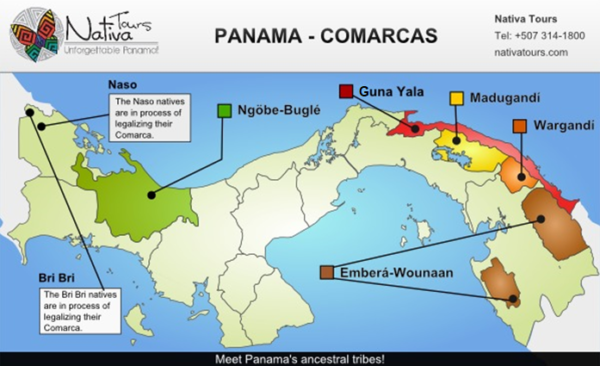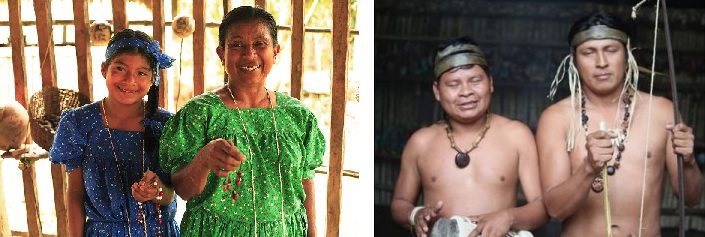
Panama has a diverse group of indigenous cultures, which play an important role in the cultural diversity of the country. There are seven different indigenous cultures: Ngöbe, Buglé, Guna, Emberá, Wounaan, Bribri and Naso. These cultures are divided into four main groups: the Guna Indians, the Emberá-Wounaan (Chocoes), the Ngöbe-Buglé (Guaymíes), and the Naso Teribe / Bribri
To a large extent, the indigenous cultures of Panama have maintained a traditional way of life and have autonomous control over their own governments. In addition to the ten geopolitical provinces of Panama, there are also five “comarcas”, belonging to indigenous groups. Comarca is a traditional region or local administrative division and allows indigenous cultures to practice their traditional forms of government without interference.

According to the 2010 census, there are 417,559 indigenous inhabitants, 12% of the total population of Panama.
There are around 50,000 Guna indigenous people in Panama with the majority living in the San Blas Islands off the Caribbean coast. There are other communities found in the Chucunaque and Bayano jungle as well.

With an estimated population of 25,000, the Emberá live in the rainforest in the Darien province, along the Chagrés River, San Juan de Pequenín and Gatún. There are around 2,600 indigenous Wounaan who also live in the Darien jungle.

It is the largest indigenous group in Panama with around 190,000 members, with 63.6% of the country’s indigenous population. This group lives in the mountainous areas of Chiriquí, Bocas del Toro and Veraguas.

There are approximately 3,800 members of the Naso Teribes tribe, and it is one of the few Native American Indian groups to have a monarchy. The Bribri population barely exceeds 2,500 inhabitants.

Both cultures inhabit the province of Bocas del Toro and live in the coastal areas of the Teribe, Changuinola, San San, Yorkin and Sixaola rivers in the extreme northwest of the country.